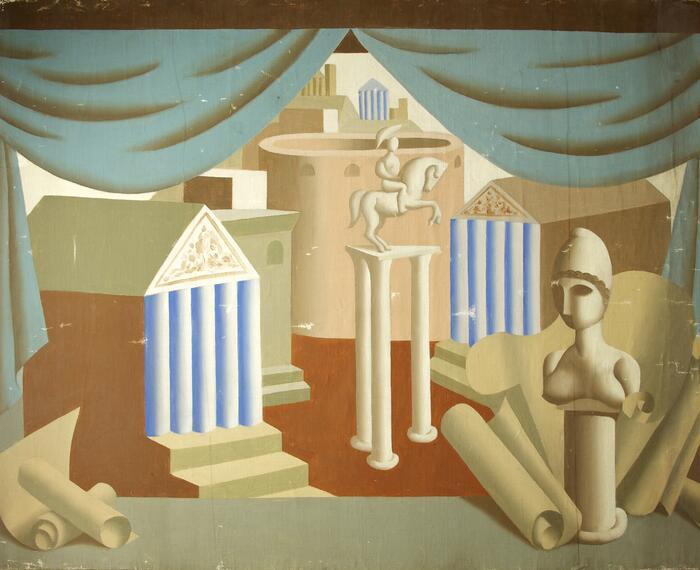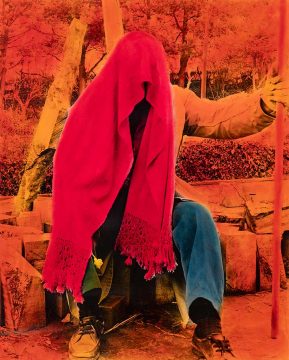


Li Yuan-chia
The exhibition Speech Acts at Manchester Art Gallery is an invitation to reconsider how museum displays, collecting policies and exhibitions are made. Occupying a middle ground between a curated temporary exhibition and a collection rehang, the exhibition comes out of the research project Black Artists & Modernism (BAM), funded by the AHRC. This three-year audit, led by artist and professor Sonia Boyce, has been revelatory in uncovering unknown holdings by artists of colour in UK public collections. The exhibition is a curatorial collaboration between Hammad Nasar, Senior Research Fellow at the Paul Mellon Centre for Studies in British Art, and at University for the Arts London for the BAM project (until May 2018) and Kate Jesson of Manchester Art Gallery. It is also a collaboration between institutions: on display are objects from the collections of the Manchester Art Gallery and the Whitworth, the John Rylands Library and Cartwright Hall in Bradford. Structurally, the show is organised into three main guiding ideas: reflection, imagination and repetition. The result is visually robust and asks the viewer to actively make connections between works, their presence and their meaning.
Manchester Art Gallery wants this show to discuss uncomfortable truths, and the first room on the theme of ‘reflection’ gathers self-portraits to investigate identity. Works range from Wyndham Lewis’s Portrait of the Artist as the Painter Raphael, 1921 to Rasheed Araeen’s photographic series Christmas Day, depicting his own reflection on the Circle Line. From David Hockney’s A Rake’s Progress, 1961 (a Contemporary Art Society donation to The Whitworth) to Hetain Patel’s The Other Suit, 2015.
Hanging at the back of the room is a portrait of a young black man by James Northcote from 1826. This painting was acquired by the museum in 1827 and until recently there had been no attempt to identify the sitter. This is remarkable, given that Northcote was one of the most notable portraitists of the 19th century. First vaguely titled A Moor, then referred to as Othello, the painting’s current title is more precise, yet still the sitter is anonymous: Othello, the Moor of Venice.
Only recently has the sitter been identified as Ira Aldridge, one of the best-known Shakespearian actors of Victorian times. Previously hanging in the section of the museum dedicated to empire and trade, the painting now sits between Lubaina Himid’s The Tailor, 2010 and Sutapa Biswas’ terrifying Housewives with Steak Knives, 1985. It is an unconventional and anti-chronological juxtaposition that prompts questions about shifting emphasis between passive and active subjects, and consideration of the identities of the artists.
The notion of belonging is an overarching theme within the show, questioning cosmopolitanism and post-war UK immigration policies, subtly interrogating what it is to be a British artist is today. A pertinent question in times of Brexit. On display are photographic prints of Li Yuan-chia as well as an important part of the archive of his LYC Museum in Cumbria. Born in China and raised in Taiwan, Li Yuan-chia moved first to Italy in the early 1960s where he was associated with the artist group Il Punto, and later relocated to the UK in 1965. Why is Li Yuan-chia not considered a ‘British’ artist when painters such as Lucian Freud and Frank Auerbach are definitely seen as such? Is it a matter of nationality, belonging and ethnic origin or are such distinctions also connected to the efforts of commercial galleries in promoting their artists?
There is an overall effort in this exhibition to address what collecting policies are and the reasons why certain artworks are left in storage while others are permanently on view. Take for example Kim Lim’s Spiral II from 1983, a minimalist composition made of Portland stone. Lim is an artist who has been widely collected by public institutions around the UK but is somehow rarely on show these days. We are reminded of the responsibility that comes with curating a public collection, which includes the telling of new narratives. Speech Acts is an invitation for curators around the country to take action: to show those artworks that have been rarely seen, to ask why that is, to collaborate with neighbouring institutions. Most of all to disrupt the logic of a ‘clear’ display in favour of a display that is visually imaginative and tells different stories to audiences, ones that they have rarely heard before.
Ilaria Puri Purini
Curator of Programmes
The Contemporary Art Society is holding a curator's study day at Manchester Art Gallery conjunction with the exhibition on 21 November 2018. More information can be found here.
Manchester Art Gallery, Mosley Street, Manchester M2 3JL. Open Tuesday - Sunday, 10.00 - 17.00, Monday 11.00 - 17.00. Exhibition continues until 22 April 2019. www.manchesterartgallery.org